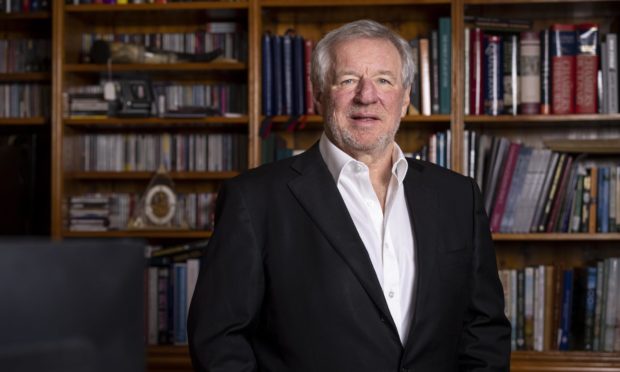Energy transition is the most exciting opportunity investors and energy industry professionals have experienced in half a century.
It’s as important a development as the discovery and extraction of North Sea oil was in the 1970s and, as happened then, the north-east is at the forefront of this revolution.
A report by Oxford Economics claims renewable energy has the potential to raise Scotland’s growth rate. It says: “It is not implausible to suggest that there are business opportunities that resemble those that generated Silicon Valley, several decades ago.” That ambition will be boosted at the UN Climate Conference, COP26, to be held in Glasgow in November.
Not long ago, renewable energy was regarded as an eccentric notion; by last year 97.4% of Scotland’s gross electricity consumption (total generation minus net exports) came from renewables.
Today, renewable energy is a world-leading industry, growing at breakneck speed. The global renewable energy market is forecast to generate revenue of $1.5 trillion (£1.1 trn) by 2025.
Just transition
This transformation has been driven by concern over climate change, but the oil and gas industry, still a crucial sector in meeting global energy demands, is well-placed to play a collaborative part in the new cleaner energy market.
A just transition must safeguard livelihoods by creating new high-quality jobs, as well as supporting and anchoring the expert supply chain that has built up around oil and gas.
In that context, I welcome the new North Sea Transition Deal between the UK Government and the offshore oil and gas industry. In return for the sector setting early targets to reduce carbon emissions by 10% by 2025, 25% by 2027 and 50% by 2030, the government and sector will jointly provide investment of up to £16 billion by 2030.
This investment will be directed towards cutting carbon emissions and will include up to £3bn to replace fossil fuel-based power supplies on offshore platforms with renewable energy, up to £3bn for carbon capture utilisation and storage, and up to £10bn for hydrogen production.
It’s a deal that should be welcomed in the north-east, as it provides an opportunity for skill sets to be transferred and livelihoods secured, supporting up to 40,000 jobs across the supply chain, and offering a strong future for Aberdeen as a leading player in Stem education.
Aberdeen University has a Centre for Energy Transition which focuses on producing research to enable the transition to net-zero.
OGTC (formerly the Oil and Gas Technology Centre) which I chair, has teamed up with the Offshore Renewable Energy Catapult to develop advanced technologies.
This Energy Transition Alliance has launched an ambitious programme, including promoting technologies to reduce the cost of power from shore, to help eliminate offshore platform CO2e (carbon dioxide equivalent) emissions – one of the main aims of the North Sea Transition Deal.
OGTC’s continued focus on integrated energy systems and offshore energy 4.0 (digitisation and automation) are similarly aligned with the deal’s objectives.
Net-zero North Sea
OGTC has a vision of a net-zero North Sea, contributing significantly to a whole new energy culture in Britain, making the country a main supplier of energy, rather than a buyer, and a world leader in the development and export of net-zero energy technologies, helping to retain our competitive position in energy skills, capability and jobs.
This transition would require up to £416bn in investment over the next 30 years, but the projected rewards are enormous, with a potential contribution of £125bn per year to the UK economy, while supporting more than 230,000 jobs.
The key to renewed wealth creation in the North Sea is an integrated net-zero energy system, focused on the synergies between the offshore oil and gas, and renewable energy sectors, capitalising on their combined skills, expertise and capabilities.
It’s a bold vision but it’s not only do-able – it’s already being done, and the North Sea Transition Deal is powerful proof of that emerging reality.
Martin Gilbert is co-founder and former chief executive of Aberdeen Asset Management.

